US-Sport
MLB: MLB Glossary: Baseball explained
Strike “,”Ball “,”Homerun “or” Perfect Game “- the MLB is crawling with technical terms you haven’t necessarily heard of before. SPOX explains the most important technical terms.
To make it easier for the Score-Keeper, who keeps track of the individual moves of each game, to write them down, each position in the field is assigned a number from 1 to 9. The distribution is standardized and results as follows:
Example: If a ball is hit to the shortstop, which then makes the hitter throw to the first base, the score sheet reads: 6-3.
Pitching Ace, too. Indicates the best starting pitcher of a team. If possible, this player should play the first match of the season, and also all the other important games, ideally against the opponent’s Ace.
American League: The MLB consists of two leagues, the American and the National League. The American League is the younger of the two and was founded in 1901. It consists of three divisions v0n five teams (East, Central, West). The biggest difference to the NL is that in the AL, the pitcher doesn’t have to face the blow and is proactively represented by a designated hitter.
Assist: When a field player provides the template to identify an opponent’s player on the base, the first player receives an assist. Any number of assists can be distributed per out.
At-Bat: If a player hits the ball and brings it into play, or if it is determined directly on the plate, it is officially counted as an at-bat. But: If the batsman comes to base by walk or hit-by-pitch, this does not count as an at-bat.
Average: The average of a battery. It is calculated with the formula: Hits per At-Bat. If a battery creates about three hits in ten at-bats, then it would have an average of. 300, which is at the same time the brand that a good hitter is aiming for at least. For comparison: an average of. 350 is sensationally good, an average of. 400 has not been reached since 1941.
Backstop: Backstop is the boundary of a baseball court behind the Home Plate.
Balcony: A balcony is a technical flaw of a pitcher while it is on the mouth and shortly before performing its pitch. He must then come to a standstill and then complete his pitch, so he must not deceive the runner to deceive a runner on base. He is also not allowed to drop the ball when he stands on the mouth and has contact with the rubber. If he violates these principles, the decision will be taken in Balk. The consequence: Every Base Runner is allowed to move up one base – but not the man at the shot.
Ball: A pitch that lands outside the strike zone and to which the battery does not swing is a “ball”. At four “balls” the player may run to the first base at the stroke. If it is occupied, this player moves one base forward, etc.
Base: There are three bases, the first, second and third. In a sense, they are the stations where Base Runners can stand. In addition, the Home Plate is also referred to as a “home base”. If the players continue to run on the Bases “Base Runner), they must have touched each additional Base.
Base Coach: Each team has a first and third base coach. Both are located on the right or on the left in the designated areas next to the Base and support the Base Runner with instructions. Especially the third base coach is important when it comes to the decision to run through to the third base or even home plate after a hit or to stand still. They also send signals to the Batter and Base Runners, whether it’s a hit-and-run or a colorful run.
Base Line: The base lines are the lines between the bases. Along these, the Base Runners run from base to base. You may not leave these paths to avoid a “day”.
Base on Balls: If a pitcher throws four balls against one battery in a Plate Appearance before three strikes, the battery may automatically advance to the first base. This process is also known as walking.
Baseball: The play equipment and the namesake of the sport. A baseball weighs between 142 and 149 grams with a diameter of 7.3 to 7.62 cm. The company Rawlings has been the official supplier since the 1970s. The outer surface is made of cowhide leather.
Basems: Three of the four players in the infield get their name from the base where they play. Namely: First Baseman, Second Baseman and Third Baseman.
Bases Empty: When a batsman without a runner on Base comes to the plate, this is called Bases Empty.
Bases Loaded: If a batsman comes to the site with runners on all three bases, this is called bases loaded. The special attraction of this is that the pitcher cannot “walk” the battery without allowing a run. At the same time, the battery runs the risk of hitting a force out, double play or even triple play.
Bat: The bat in baseball is called Bat and is made of wood on a professional level.
Batter: (Also: Hitter) The batsman in baseball.
Battery: The combination of pitcher and catcher.
Batter’s Box: The area to the right and left of the Home Plate where the batsman stands for his respective Plate Appearance to hit. If the referee gives permission, you may also leave this box for a short time, e. g. to refocus.
Batter’s Eye: Each baseball stadium has an area in the stands of the Center Field just opposite the Home Plate in which there is no spectators and a plain, dark background. This “Batter’s Eye” is used by the batsmen to see pitches better, which would be rather difficult in front of colorful dressed spectators.
Batting Order: The batting order of each baseball team consists of nine people and may not be changed during the game. However, players may be replaced if they are no longer eligible for betting.
Bench Coach: The most experienced coach in the coaching staff serves as the manager’s consultant in the dugout. At the same time, he is considered to be the deputy manager if this time, however, he has been expelled in the event of an ailment or dugout.
Big Leagues: Big Leagues are the two major leagues, the American and the National League. In contrast to this there are the Minor Leagues.
Box Score: A box score is the table in which the statistics of each player for the game are listed and serve as a practical overview of the most important occurrences.
Bullpen: The bullpen is primarily the most delimited area of a ball park where the relief pitcher is located during the game. There is also room for the same to warm up for an operation. At the same time, Bullpen also refers to the contingent of relief pitchers of a team.
Colourful: A battery can not only swing the club to make contact with the ball. Alternatively, he can hold the bat with both hands and let the ball drip off. This is a colorful one. It can be used either as a surprising hit attempt or as a tactical means to advance a runner’s base – even if it will most likely turn you off yourself (e. g. for pitchers). Attention: If the ball lands in the foul territory during a colorful attempt and two strikes, the player is out.
Catcher: The Catcher sits behind the Home Plate and is probably the most important field player of a team. It catches the pitches and usually tells the pitchers which pitch to throw next. In addition, as a link to the manager, he points out any special formations of the defense. In contrast to the other field players, he wears protectors on the chest, knee, shin, as well as a special face mask and a particularly hard glove.
Catcher’s Interference: A Catcher must not interfere with the battery’s swing. If he does this anyway and gets caught with the racket on the glove, the battery is automatically allowed to the first base.
Check (ed) Swing: If a battery starts to swing and stops it before the racquet crosses the home plate, it is called a Checked Swing. Whether such a manoeuvre was successful in the end, however, is determined by the base overpass on the opposite side to the batsman – the third base overpass is responsible for a left-handed batsman, while the righthanded first base overpass is responsible for a left-handed batsman.
Cleanup Hitter: The term “cleanup hitter” refers to the battery that beats at position four of the stroke sequence. Ideally, the three of them loaded the bases in front of him so that he can clear them. At this point, a hitter usually strikes in a lot of power to hit a home run if necessary.
Closer: The most important relief pitcher of a team – usually the best paid one – is the closer. Ideally, he takes over the ball in the ninth inning and finishes the game for his team. Closers are usually only used for tight guides and are characterized by their above-average nerve strength. In addition, they often throw particularly hard.
Clubhouse: The clubhouse is the cabin of a crew. As a rule, it is very extravagantly equipped in the MLB and, in addition to the changing room area and the showers, also consists of a recreation area especially for the players, an office for the manager and space for physiotherapists. In some stadiums, there is also an indoor batting cage and a video room for quick analysis of the game while it is still running.
Complete Game: If a pitcher manages to complete all nine innings without another pitcher having to step in for him, this is called a Complete Game. Nowadays this has become a rarity as more and more emphasis is placed on reliefs.
Count: Count is the ratio of balls and strikes in each Plate Appearance. Three balls and two strikes are called a “full count”, because the next ball means the walk, the next strike a strikeout.
Cy Young Award: The Cy Young Award is presented to the best pitcher of each season in the two leagues. Named after Cy Young, who won a total of 511 games between 1890 and 1911 – the most games ever in the MLB.
Cycle:”To hit for the cycle” means that a battery in a game beats a single, a double, a triple and a home run, which is very rare.
Designated hitter: The designated hitter is the pitcher’s representative in the batting order and only takes action as a batsman, while all the other batteries also appear defensively. The DH is only available in the American League as well as in interleague matches at the AL Stadium and generally in the All-Star Game.
Diamond: The infield is called Diamond because of its square shape.
Double: A double is a so-called two-base hit. This means: One battery beats the ball and consequently reaches the second base due to its own striking (and running) power. On the way to second base he must have touched the first base. A double usually occurs when the ball is hit deep into the outfield.
Doubleheader: A double header is two games in a row on one day. In the past, this was common practice, but nowadays it only happens when a game of a series has to be postponed due to rain, for example, and a match day is not available due to time constraints.
Double Play: If a batsman brings it into the game and not only takes care of his own out, but also that of a fellow player, it’s called a double play. Best example: A runner is standing on the first base and the battery beats a groundball to the shortstop. He touches the second base and then throws to the first one – before the respective runner gets there. Two outs, double play! Another example would be the “Strikeout-Throwout-Double Play”: The pitcher manages a strikeout, in the following the catcher catches the man on the first base stealing the second base.
Dugout: The dugout is the bank area of a baseball team. The coaches, substitutes and physios sit there, as well as all the players who are not in their turn during the offensive half of an inning. The area is covered almost everywhere and has a safety fence to protect it from foul balls.
ERA: The Earned Run Average is probably the most common statistic for a pitcher. It specifies how many runs a pitcher projects to nine innings, i. e. in an entire game. Example: A pitcher completes six innings and submits three runs. So you divide the 3 runs by 6 innings and get 0.5, which you multiply by nine. That gives an ERA of 4.50. In a Complete Game with only one Earned Run, the pitcher would have an ERA of 1.00 accordingly. For classification: With an Ace the ERA should be below 3.00, everything under 2.50 is extremely good. In the case of strong reliefs, the ERA is even lower – but in return, they pitch much less innings.
Error: An error is an error of a field player. An error is assigned by the official scorer – the bookkeeper of the game – and is used if a field player does not achieve a theoretically simple out. If such an error causes a battery to reach the first base (e. g. When the shortstop throws a simple ball into the stands, it is called “reached on error”.
Extra-Base Hit: Any hit that beats a single – a double, triple or home run – is an extra base hit.
A-E
F-L
M-R
S-Z


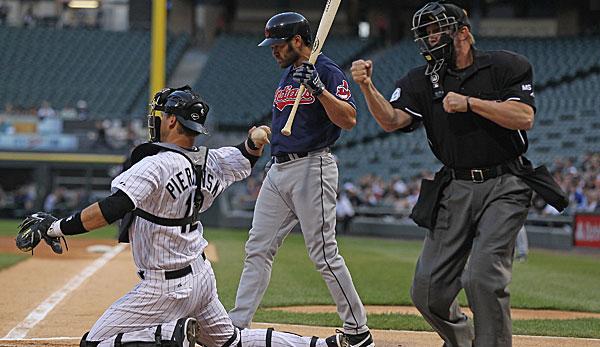




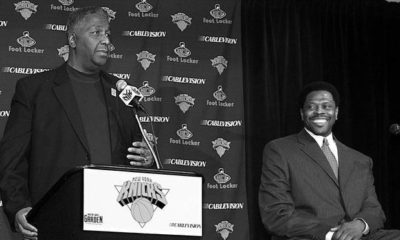
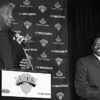
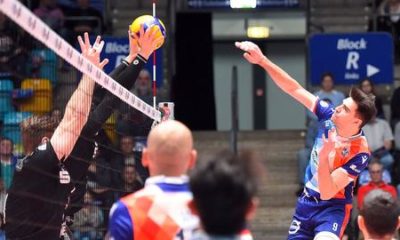
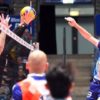
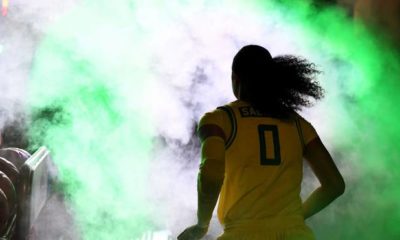






You must be logged in to post a comment Login